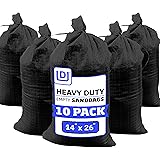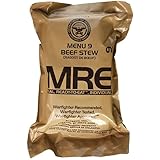Understanding the Importance of Water Collection Systems
Why Prepare for Emergencies?
When it comes to emergency preparedness, the first thing that often springs to mind is food, but let’s not forget water! In my experience, having a reliable water source during a crisis can mean the difference between survival and having to rely on less-than-ideal solutions.
Water is essential for everything from drinking to sanitation, and in an emergency situation, it often becomes one of our most critical needs. I’ve learned that natural disasters can strike unexpectedly, and having a plan for water collection is crucial.
Emergency situations vary widely, but they all have one thing in common: the importance of a clean, accessible water source. Whether you’re facing a natural disaster or a man-made emergency, being prepared will give you peace of mind.
The Types of Emergencies to Prepare For
From hurricanes to earthquakes, the types of emergencies that can occur are numerous. Each situation brings its unique set of challenges, and knowing how to collect water in these scenarios is vital.
For instance, during a hurricane, floodwaters may be contaminated. Thus, I focus on systems that not only collect rainwater but filter it. Similarly, in an earthquake, water lines may be compromised, necessitating immediate alternatives.
Understanding the specific kind of emergencies prevalent in your area can help tailor your water collection strategies. That’s something I’ve figured out over years of trial and error!
The Science Behind Water Collection
It might seem a bit geeky, but learning how water collection works can be incredibly rewarding. From storing rainwater to utilizing stored water in potable systems, I’ve discovered some practical ways to make the maths work.
Did you know that on average, one inch of rainfall on a 1,000 square foot roof can yield around 600 gallons of water? Understanding this can help you design your collection system effectively! I’ve installed systems myself more than once and seeing the amount collected was a major win.
== > What if ... Get a FREE Subscription to PREPARE
Getting down into the nitty-gritty of filtration and storage is equally important. It’s one thing to collect the water; it’s another to ensure it’s safe to drink. In my experience, having the right filters makes a world of difference.
Choosing the Right Water Collection System
Different Types of Systems Available
There’s a veritable smorgasbord of water collection systems out there, from simple rain barrels to complex cistern systems. I remember the first time I set up a rain barrel. It was a small project that turned into a fun little hobby!
For those just starting, I recommend beginning with a basic barrel setup. It’s easy, affordable, and incredibly satisfying once it’s full during a rainstorm. As you gain confidence, you can explore more intricate systems.
For anyone who may have a larger property or farm, consider investing in a cistern system. These systems not only handle bigger volumes but can also be set up to filter and purify the water efficiently.
DIY vs. Professional Installation
When I began my journey into water collection, I opted for the DIY route. And let me tell you, it was exhilarating! I learned a ton and saved some cash. That said, it’s not for everyone.
For those who feel less handy or don’t have the time, hiring a professional can save you the stress. They can offer tailored solutions that perfectly fit your needs, ensuring everything is installed correctly.
Ultimately, whether you choose DIY or professional, ensure that you follow local regulations regarding water collection. It’s vital to play by the rules to avoid complications!
Maintenance of Your Water Collection System
Okay, so you’ve set up your system—wonderful! But don’t think the work ends there. Maintenance is crucial for your collection system to function effectively. From cleaning your gutters to regularly checking for leaks, it’s all in the upkeep!
I’ve seen firsthand what happens when I neglect maintenance. Algae can build up, and before you know it, those cute little barrels are more of a green petri dish than a water collection tool!
Make it a habit to inspect your systems once each season. This simple practice can save you major headaches down the line.
Best Practices for Water Safety
Understanding Water Quality
Let’s chat water quality! Just because you have water doesn’t mean it’s safe to drink. Understanding the factors that affect water quality is something I wish I had learned sooner.
Things like sediment, chemicals, and bacteria can wreak havoc on the quality of your collected water. It’s crucial to test your water regularly and understand what to look out for. I learned this the hard way; not having the right testing kits almost had me drinking unsafe water!
Always remember, if water looks or smells off, it probably is. Trust your instincts. As a rule, when in doubt, don’t drink it!
Get Preparedness and Self-Reliance Tips. Subscribe Now!
Using Filtration Systems
Investing in a solid filtration system is one of the best decisions I’ve ever made. There’s a wide range of filters available depending on your needs and budget. From simple charcoal filters to more advanced reverse osmosis setups, the options are endless!
Having a reliable filtration system can make even questionable water safe to drink. Knowing my water is clean gives me peace of mind, especially in an emergency. It’s like having insurance for your health!
Make sure to follow the manufacturer’s instructions for maintenance. Regularly changing filters and components is key to keeping your water safe.
Storage Considerations
Storing your collected water correctly is just as important as collecting it in the first place. You want to keep it cool, dark, and covered to prevent algae growth and contamination.
My favorite storage solution is food-grade water containers. They’re durable and specifically designed to keep your water safe for long periods. Plus, they’re stackable, which helps save space!
Having a rotation system for your stored water can ensure you’re always working with the freshest supply. It’s easy to forget what’s in the back corners of your garage, so marking containers with dates can be super helpful!
Real-Life Applications and Benefits
Real-Life Success Stories
I’ve chatted with countless folks who’ve implemented water collection systems in their homes. Many have shared stories about how their systems saved them during unexpected floods or droughts.
One memorable story was from a neighbor who had set up a rainwater collection system right before a big storm hit. They ended up with a huge supply of water that allowed them to keep their gardens thriving during a dry spell. Such wins really showcase the importance of being prepared!
These success stories inspire me and remind me that we’re all in this together. By sharing ideas and experiences, we can build a stronger community—one that’s well-prepared for anything life throws our way.
Cost-Effectiveness Over Time
While setting up a water collection system may require an upfront investment, I can tell you that over time, it pays off. Not only do you save on water bills, but you also gain a level of self-sufficiency that’s priceless.
In a world where water shortages are becoming more common, having your own supply feels empowering. You’re not just relying on the grid—you’re taking matters into your own hands!
Plus, think about the potential to use collected water for irrigation; you’ll be nurturing the environment while saving some bucks. It’s a win-win!
Contributing to the Community
Water is a communal resource, and collecting rainwater can also lead to wonderful community initiatives. I’ve often linked arms with neighbors to set up community gardens using our collected water, fostering collaboration and support.
Additionally, sharing knowledge about building water collection systems can empower others in our community. It’s all about lifting each other up, folks!
Everyone benefits from a well-informed community, and the more we work together, the better prepared we all are for emergencies.
FAQ about Emergency Water Collection Systems
1. What is the first step in setting up an emergency water collection system?
The first step is to assess your needs. Look at your property, determine where rainwater naturally flows, and think about how much water you would like to collect. This groundwork is essential for planning effectively!
2. How can I ensure that the collected water is safe to drink?
Make sure to include a good filtration system and regularly test your water for contaminants. It’s also crucial to store the water properly and under clean conditions to avoid bacteria growth.
3. Are there specific local regulations I need to follow?
Absolutely! Regulations can vary from place to place, so it’s essential to check with local authorities to ensure that your water collection practices comply with any laws in your area.
4. Can I use collected water for my garden?
Yes, using collected rainwater for irrigation is not only sustainable but can also save you money. Just make sure that the water is free of contaminants and safe for your plants!
5. What maintenance does a water collection system require?
Maintenance primarily involves cleaning your gutters, checking for leaks, replacing filters regularly, and ensuring that your storage containers are clean and free of algae or contaminants. Regular checks will help your system run smoothly!






